A reverse exchange under §1031 of the Internal Revenue Code (IRC) allows a taxpayer to acquire a replacement property before selling their relinquished property, while still deferring capital gains taxes. This is the reverse of the more common 1031 deferred exchange, in which the relinquished property is sold first, and the replacement property is acquired afterward.
Have questions about a reverse 1031 exchange? Contact us today to schedule your free consultation and start building your strategy.
What Is a Reverse 1031 Exchange?
A reverse exchange is used when a taxpayer wants to secure a replacement property before selling their existing property, either because they found a desirable property that might sell quickly or due to timing or market considerations. The IRS has created a "Safe Harbor" for reverse exchanges, similar to the safe harbor created for forward deferred exchanges. The following elements are based on the safe harbor requirements found in Rev. Proc. 2000-37, 2000-40 I.R.B. 308.
Key Elements of a Reverse Exchange:
- Qualified Intermediary (QI) and Exchange Accommodation Titleholder (EAT):
- As with other types of 1031 exchanges, a Qualified Intermediary (QI) is involved, but a reverse exchange also requires an Exchange Accommodation Titleholder (EAT).
- The EAT takes title to either the replacement property or the relinquished property, since the taxpayer cannot legally own both properties at the same time during the exchange process.
- There are two options when structuring a reverse exchange:
- "Parked" Replacement Property: The EAT holds title to the replacement property until the taxpayer closes on the sale of the relinquished property; or
- "Parked" Relinquished Property: The EAT holds title to the relinquished property while the taxpayer closes on the purchase of the replacement property.
- Identification Period (45-Day Rule): In a reverse 1031 exchange where the replacement property is parked, the taxpayer must identify the relinquished property or properties which the taxpayer intends to sell.
- Completion Period (180-Day Rule): the taxpayer has 180 days following acquisition of the replacement property to complete the sale of the relinquished property.
- Like-Kind Requirement: As with all Section 1031 exchanges, the relinquished property and replacement property must be of "like-kind," meaning both must be held for investment or business use.
- No Constructive Receipt: The exchange agreement restricts the taxpayer’s access to the relinquished property proceeds to avoid constructive receipt of the proceeds of sale.

Example of a Reverse 1031 Exchange:
- Day 1: The taxpayer locates a commercial building (potential replacement property) they wish to purchase for $1 million. Taxpayer has listed but not yet sold, their current office building (relinquished property).
- Day 10: The taxpayer enters into a qualified exchange accommodation agreement with an Exchange Accommodation Titleholder (EAT) to take title to the replacement property. Title to the replacement property is "parked" with the EAT while the taxpayer endeavors to sell their relinquished property.
- Day 45: The taxpayer identifies their current office building as the relinquished property to be sold.
- Day 150: The taxpayer sells the office building for $1 million and uses the sale proceeds to complete the purchase of the replacement property.
- Day 160: The EAT transfers the title of the replacement property (or membership interests in the EAT) to the taxpayer, completing the exchange.
Advantages of a Reverse Exchange:
A reverse 1031 exchange allows investors to acquire a new property before selling their existing one, providing flexibility and strategic options. This unique approach enables investors to seize opportunities in a competitive market while still deferring capital gains taxes.
Benefits include:
- Secure the Replacement Property: The taxpayer can purchase a desired replacement property immediately, without worrying about losing it due to delays in selling their relinquished property.
- Flexibility: This type of exchange provides more flexibility with timing, allowing the taxpayer to acquire the replacement property before selling.
- Tax Deferral: Like other 1031 exchanges, reverse exchanges allow the taxpayer to defer capital gains taxes on the sale of the relinquished property, preserving capital for reinvestment.
Challenges of a Reverse 1031 Exchange:
- Higher Costs: Reverse exchanges are more complex than standard deferred exchanges and typically involve higher costs due to the need for an Exchange Accommodation Titleholder (EAT), additional legal and accounting fees, and financing costs.
- Financing Challenges: The taxpayer may need to secure financing to acquire the replacement property while waiting to sell the relinquished property. Financing a property held by the EAT can also be tricky.
- Strict Deadlines: Under the "safe harbor" found in Rev. Proc. 2000-37 the taxpayer must still meet the IRS’s strict 45-day identification period and 180-day completion period.
Alternatives to Reverse Exchanges:
- Improvement Exchange: If the taxpayer needs to make improvements to the replacement property, they may consider an improvement exchange.
- Simultaneous Exchange: If timing works out perfectly, the taxpayer can consider a simultaneous exchange, where both properties are exchanged at the same time.
Contact 1031 Exchange Intermediaries to Get Started
In summary, a reverse exchange under Section 1031 allows the taxpayer to purchase the replacement property first and then sell the relinquished property, making it an excellent strategy for investors who want to secure a property before completing a sale. However, it requires careful planning due to its complexity, costs, and strict deadlines.
In all exchanges it is essential to allow adequate time for planning, including setting up the appropriate exchange transaction. Contact 1031 exchange intermediaries to discuss your reverse 1031 exchange. To learn more or to start an exchange, contact our team today online or by phone at 314-822-8100.

